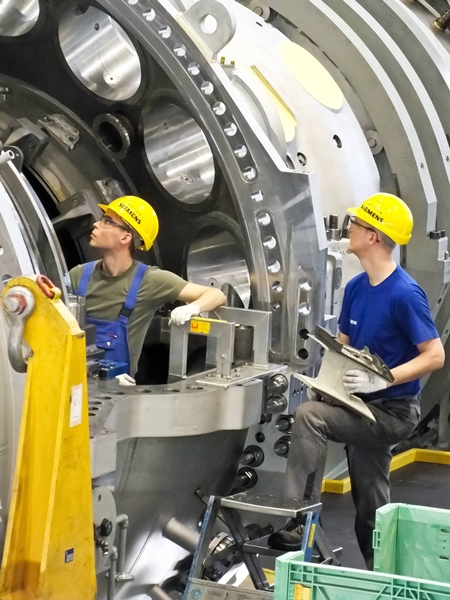Why Europe and the U.S. need an innovative Re-Industrialization
“Industry must be promoted, but as soon as it flourishes it must do its own part to support the state”, quipped Voltaire sagaciously in his “The Man of 40 Pieces of Silver”. No stranger to aperçus, the philosopher was revealing his acute understanding of industrial macroeconomics, and this some 250 years ago. His statement did not just apply to his home country of France however. A stone’s throw across the Channel, the British took it to heart. England of course was where the first industrial revolution was ushered in by Thomas Newcomen’s invention of the first practical steam engine in 1712.
Where do we stand 300 years later?
On the wrong track
Sad as it is to say, we must come to the sobering conclusion that many European countries and the United States have been following one another down the wrong track for the past 25 years. With the advent of globalization came the realization that in economies built on the division of labor, the established industrial powers could not compete with the emerging economies of the developing world on cost alone.
Conventional wisdom was that the future belonged to the providers of high-value services with the financial sector providing the stage for this new revolution to take place. With seemingly limitless resources, the international capital markets drove countless banks into new business areas.
The birth of ‘Financial Industry’
During the boom, financial engineers created products of scarcely fathomable complexity far removed from the fundamental purpose of banking – the transformation of risk and maturity. Lenders’ business models were redefined along the lines of value creation chains in manufacturing and the financial sector mutated to become the ‘Financial Industry’.

“The focus should be on building an industrial sector which creates research intensive products and goods of outstanding quality,” says Siegfried Guterman.
Revolutions have a nasty tendency to devour their own children, and so it was with the financial-industrial revolution. Four years after it began, the financial and economic crisis in Europe is still casting its austere shadow over the continent. But although this is cause for concern, the crisis also has its silver lining. More than ever before, it is clear that a strong industrial base is an indispensable element for all economies, even mature ones.
A financial industry that cuts its ties to the ‘real economy’ and fails to understand its role as that of a supporting player in a larger scheme cannot contribute to long term economic growth and stability. These days, a national economy based primarily on services is considered to be particularly vulnerable. In France, industry comprises 12% of the total economy. Only slightly better are the United Kingdom and the US with a paltry 16%.
Back to basics
Nearly all developed economies are now realigning their priorities toward a strengthening of their industrial bases. President Obama has set a goal for the United States to double its exports by 2015, a target which is inconceivable without a strong industrial sector. The extent of the deindustrialization we have seen in the United States over the past decades however is alarming.
The magnitude of the task Obama has set for his country becomes clear when one considers that Detroit sees turning parts of its urban core back into farmland as its best option. This will be of no surprise to rail passengers traveling between New York and Washington who pass through landscapes of shuttered and crumbling factories.
Hurricane Sandy was a devastating reminder of just how antiquated America’s infrastructure has become. Across broad swathes of America the electricity, water, and transportation grids have been neglected since the 1950s.
An industrial renaissance is also long overdue in Europe. In mid 2012, EU commissioner Günther Oettinger announced ambitious targets for an average of 20% of economic output to be industry generated by 2020. In November of this year, the EU commissioner responsible for industrial policy, Antonio Tajani, spoke out forcefully for a reindustrialization of the EU which he argued was a critical complement to the necessary austerity policies.
Some Asian economies have also recognized the sign of the times and are prepared to defend their position against an industrial resurgence in Europe and America. One example is China who will face threats on two fronts – cheap labor markets like Vietnam and Bangladesh on the one hand and the high-end manufacturers from the United States, Europe and Japan on the other.
